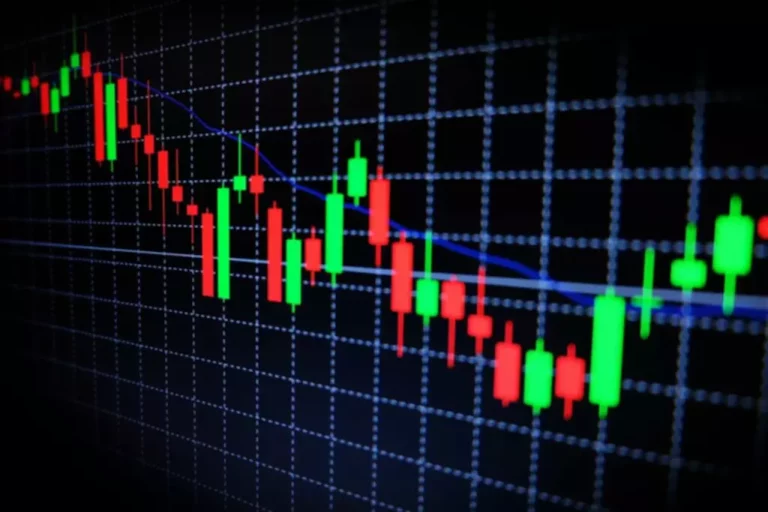At the end of each trading day, the ETF issuer publishes the Portfolio Component List, which includes the security names and corresponding portions that comprise the ETF basket for the following buying and selling day. Buyers and sellers of ETF shares place their orders by way of registered brokers, exchanging money https://www.xcritical.in/ for ETF shares when buying and vice versa for selling. The different ETF size consideration is whether or not or not the ETF has adequate belongings to successfully hold and due to this fact observe the underlying constituents of the index.
An AP buys the ETF shares from the market and returns them to the ETF issuer. The AP receives a basket of the underlying clear tech stocks in change. This process helps to soak up the surplus supply of ETF shares out there, supporting the ETF’s worth and stopping it from plummeting.
Liquidity The capacity to quickly buy or sell an investment in the market without impacting its worth. In our example, having zero ETF shares traded for even a yr has no influence on the ETF being ready to commerce $50m (£38m) in a single day. This is because the investment manager of the ETF can invest $50m dollars into the FTSE one hundred corporations with no points.
How Liquidity Of Underlying Property Impacts Creations And Redemptions
Therefore, all it exhibits is investor demand in that particular ETF, not its level of liquidity. Comparatively, an ETF that invests in a basket of high-yield bonds, shall be as liquid as these bonds. For instance, a FTSE a hundred ETF will hold all the composite firms matching the percentage weights within the index. If you wish to invest £10m in that ETF, the ETF investment manager wants to have the power to purchase £10m worth of shares in the corporations that make up the index. ETFs are out there in many sizes and shapes, monitoring a variety of asset courses, therefore it’s unimaginable to generalise. However, it’s not the ETF structure itself that determines the liquidity of the ETF.

Less liquid belongings might take longer to sell or require accepting a discounted worth. With the intervention of market makers, new shares will be created when there are extra purchase orders (demands) than sell orders (supply) out there. Conversely, market makers purchase shares from the market when there are more sell orders than purchase orders.
What Is Etf Liquidity?
This helps maintain the value of GreenTech ETF in check, making certain its price is closely aligned with the NAV. Given their relationship with market members and insight into primary and secondary market exercise, they’re a important useful resource for buyers looking to execute giant ETF trades effectively. The first is “on‑screen” liquidity, which investors and market members can see and source (also often known as the ETF secondary market).

No, solely APs are allowed to transact directly with the ETF issuer to create and redeem shares. Retail buyers can solely buy or sell ETF shares on a secondary market trade. The size of an ETF measured by its property underneath management (AUM) likewise doesn’t essentially dictate its liquidity. Even ETFs with smaller AUM can have high liquidity if they observe a liquid index or sector and have energetic APs facilitating the creation and redemption process. Trading exercise is among the major sources of liquidity for ETFs, although it is not the only one. An increase in secondary market trading volumes will increase an ETF’s liquidity considerably.
How Do You Evaluate The Liquidity Of An Etf?
This material is offered for informational functions solely and is not intended to be investment recommendation or a recommendation to take any specific investment action. For illustrative functions solely and not supposed to be a suggestion to take any specific investment action. This article explains ETF liquidity, how you can measure the liquidity of your ETFs, and why it is essential for you.
There are additionally financial advantages for the capital markets participants. All that has occurred is that the investment manager has purchased $50m of the underlying corporations within the index and so they can redeem them the subsequent day if they wish, with zero impact on the performance of the ETF. This just isn’t essentially true, and again, what typically matters most are the underlying constituents that need to be traded when the ETF is bought or sold. Opinions and statements of monetary market trends which may be primarily based on current market conditions represent our judgment and are subject to alter with out notice.

However, an investor can very comfortably invest $50m in a day bringing the whole assets to $51m, because of the liquidity of the underlying FTSE 100 firms. The funding supervisor must sell the underlying junk bonds to other buyers who may be few and much between. Although ETFs have many traits that are similar to shares, liquidity isn’t one of them. Therefore, it‘s essential to look beyond buying and selling volumes and on-screen indicators when assessing ETF liquidity. “A general retreat from lively public equities to illiquid investments [in the personal sector] all point to a higher fragility of liquidity in public markets. We in all probability have to get used to extra ‘flash crashes,’ and in addition of the potential for flash crashes that spill over from one asset class to another,” Inigo-Jones additionally mentioned, per BI.
Even if we have a glance at a more illiquid underlying asset, for example junk bonds, the story is the same. In normal circumstances, a preferred junk bond ETF could have important volume on change as investors purchase and promote the ETF all through the day. However, an ETF just isn’t an individual stock or share, however as a substitute an funding fund that solely requires liquid underlying property to be liquid at the fund level. For instance, if a FTSE 100 ETF has zero demand from traders and due to this fact shows no volume traded, a standard view of liquidity will say that the ETF is illiquid, that it can’t be easily bought or sold by investors. An ETF can have zero shares traded on change or have vast numbers of shares traded on change, nonetheless, again, what really issues is the underlying property.This is an important a part of understanding ETF liquidity.
The spread is the price of doing business, and it is the difference between the value you’d pay to buy an ETF and the amount you’ll obtain should you sold it. The lower the spread, the more liquid your ETFs will be, whereas the higher the unfold, the lesser liquid your ETFs will be. ETFs have two liquidity components – underlying asset liquidity and ETF liquidity. By daily buying and selling volume, the S&P 500 SPDR (SPY), Invesco QQQ (QQQ), and Financial Select Sector SPDR (XLF) are usually among the many most energetic ETFs. This is why, despite one of many biggest mounted earnings bear markets in centuries, bond ETFs have seen web inflows of over $1tn since April 2020.
Due to their complex creation/redemption procedures, most ETFs measure their liquidity by reference to their underlying assets. For much less liquid securities, corresponding to emerging market equities, market makers could not have the power to source the securities. In this case, the ETF issuer may settle for cash-in-lieu as part of the ETF basket, buy those securities directly from underlying security markets for the fund, after which cost related prices to the market maker.
This process happens in reverse with redemption orders, if market makers must liquidate the ETF basket delivered from the AP and return the proceeds to the seller of ETF shares. In the top, creation and redemption of ETF shares in the primary market could result in transactions in underlying safety markets. APs, which might create and redeem ETF shares, notice this demand spike. An AP assembles a basket of the underlying clean tech shares that GreenTech ETF tracks and exchanges it with the ETF issuer for brand new shares of GreenTech ETF. These new shares are then introduced out there, growing the provision to meet the burgeoning demand.
Conversely, ETFs tracking obscure or much less liquid indexes may face liquidity challenges, as the underlying assets could be tougher to commerce, affecting the efficiency of the creation and redemption course of. Investors and traders in any security profit from larger liquidity—that is, the power to shortly and efficiently promote an asset for cash. Investors who maintain ETFs that aren’t liquid could have trouble selling them on the worth they want or in the time frame needed. Moreover, if an ETF invests in illiquid shares or uses leverage, the market value of the ETF could fall dramatically below the fund’s NAV.
- Secondary market liquidity is the benefit with which buyers should buy or sell ETF shares on exchanges, much like individual shares.
- Generally speaking, the smaller the spread, the upper the liquidity.
- Net Asset Value (NAV)
- A well-structured ETF with liquid underlying assets can higher adapt to market demand adjustments, preserving honest prices and an environment friendly investor buying and selling experience.
- Investors who don’t need immediate entry to liquidity will always abstain from promoting their ETF shares prematurely.
- But we have been closer to mass gating across the bond mutual fund complex than we were to a serious bond ETF accident.
ETFs make investments across asset lessons and track specific indices corresponding to stock, bond, or commodity. The lesser an asset’s funding danger, the more liquid it is, making buying and selling such funds simpler. The basic liquidity of the belongings that comprise it influences ETF liquidity. In essence, the liquidity of the underlying holdings of an ETF instantly impacts the ETF’s liquidity. A well-structured ETF with liquid underlying belongings can higher adapt to market demand adjustments, preserving truthful prices and an efficient investor trading expertise.

